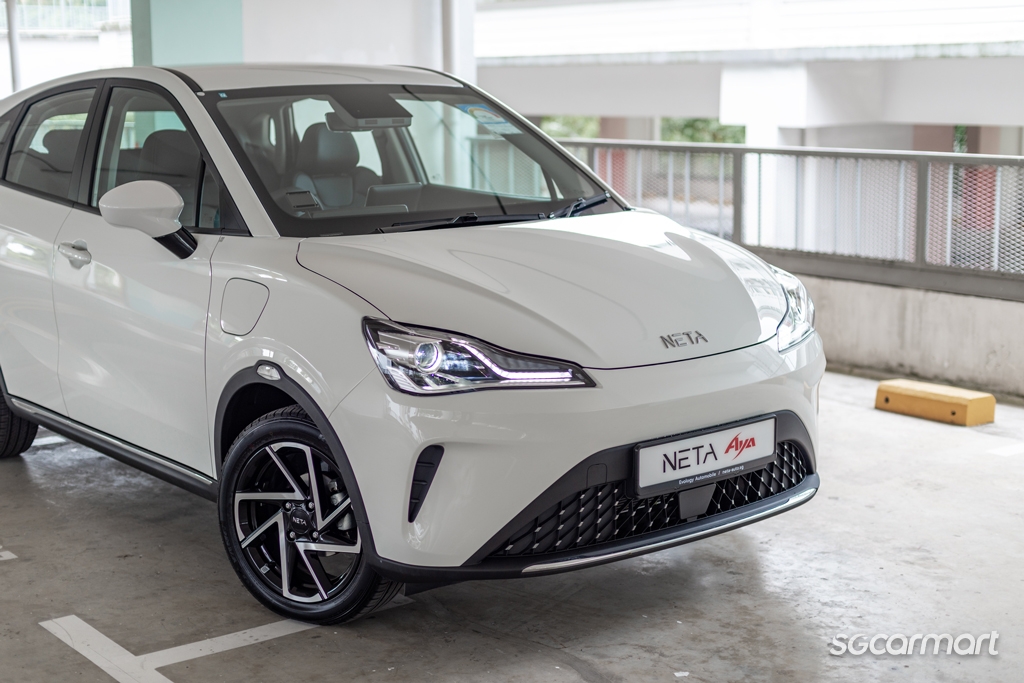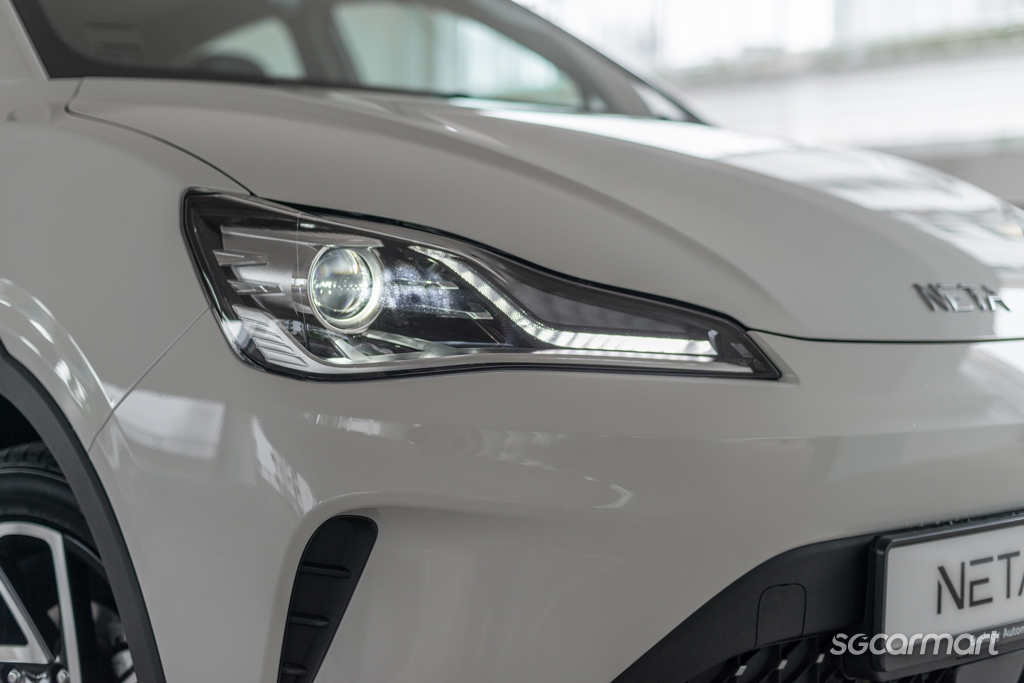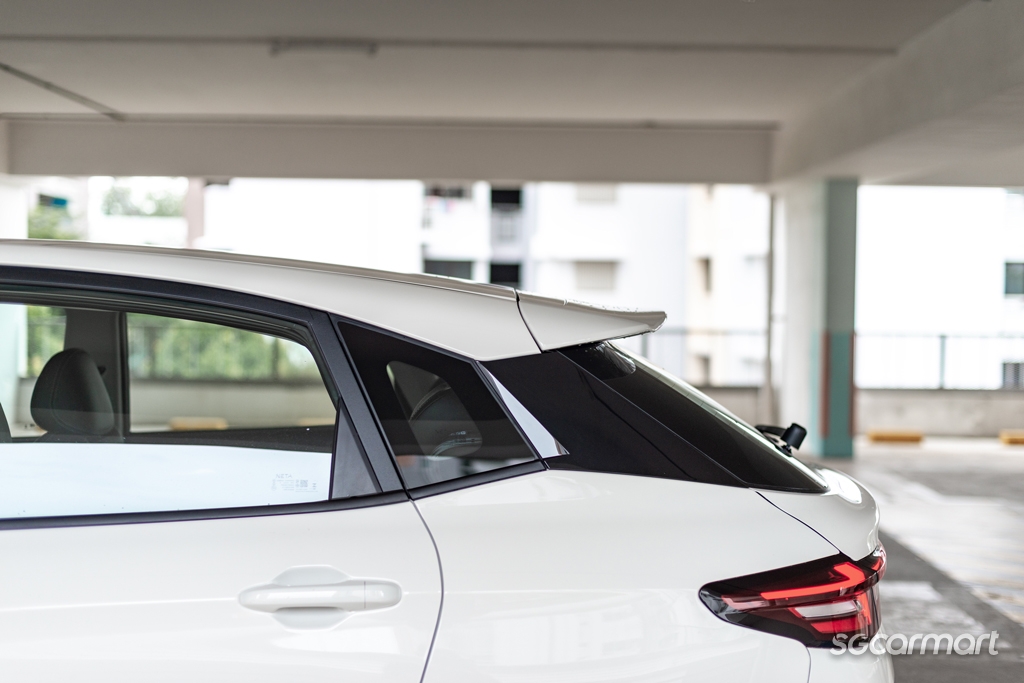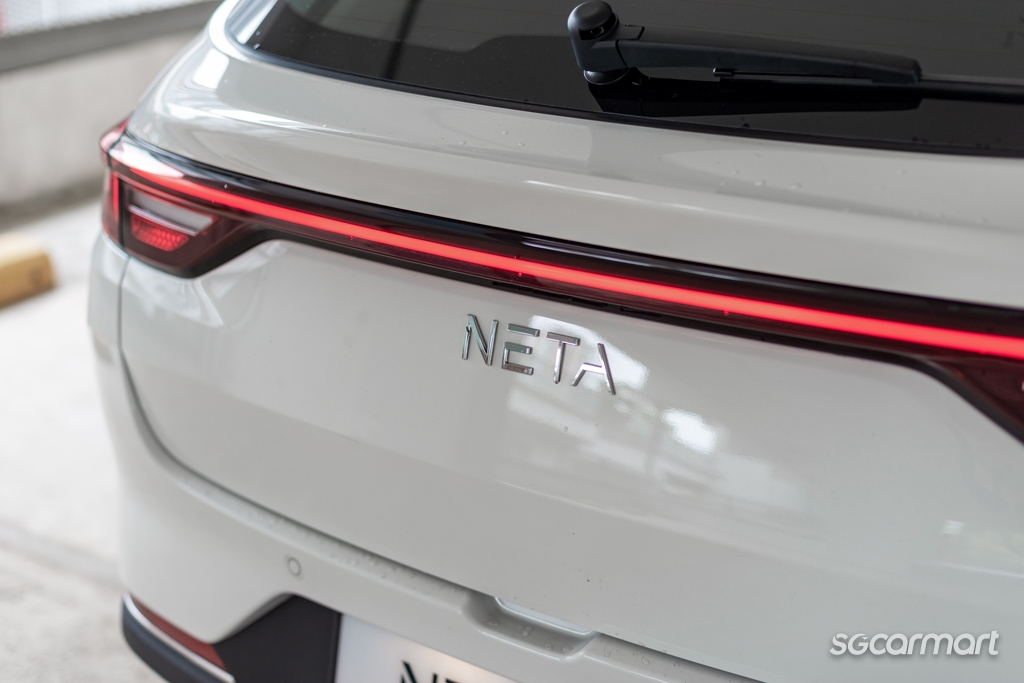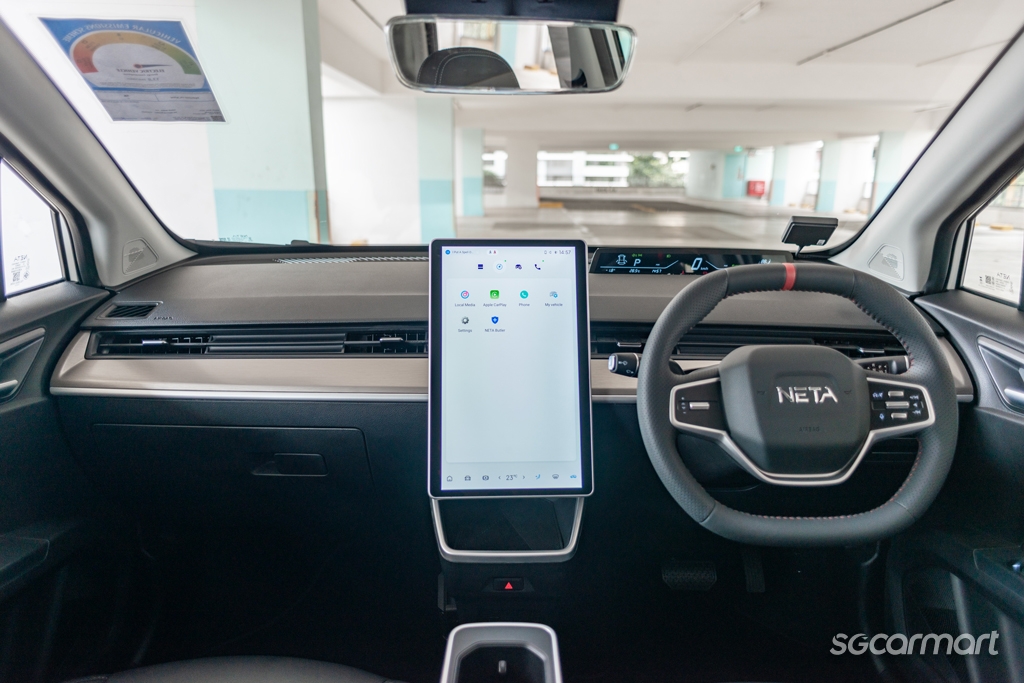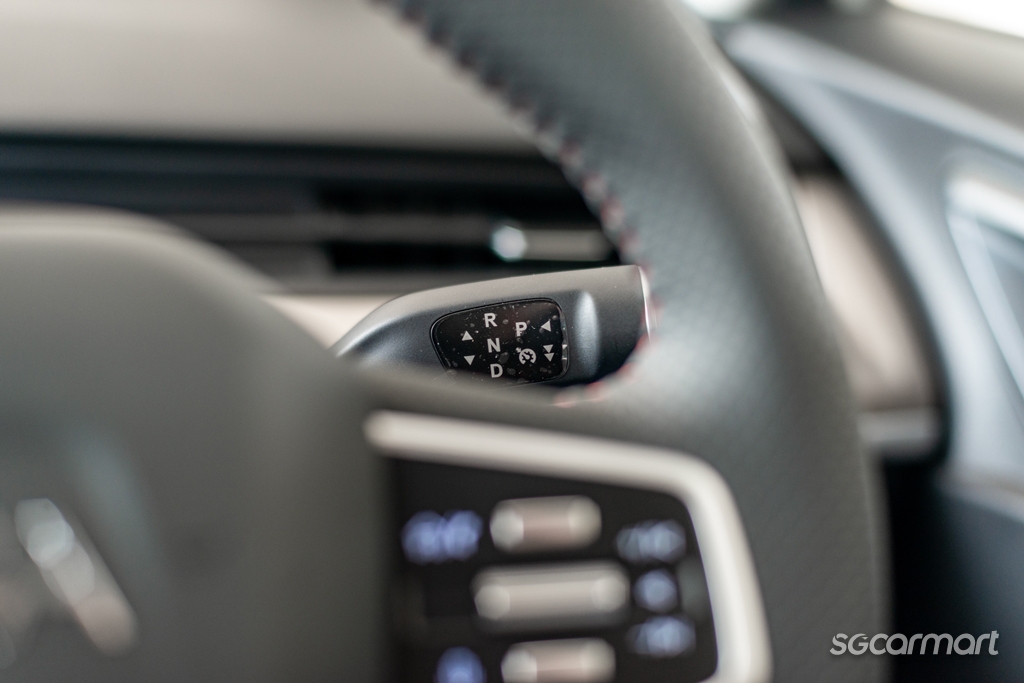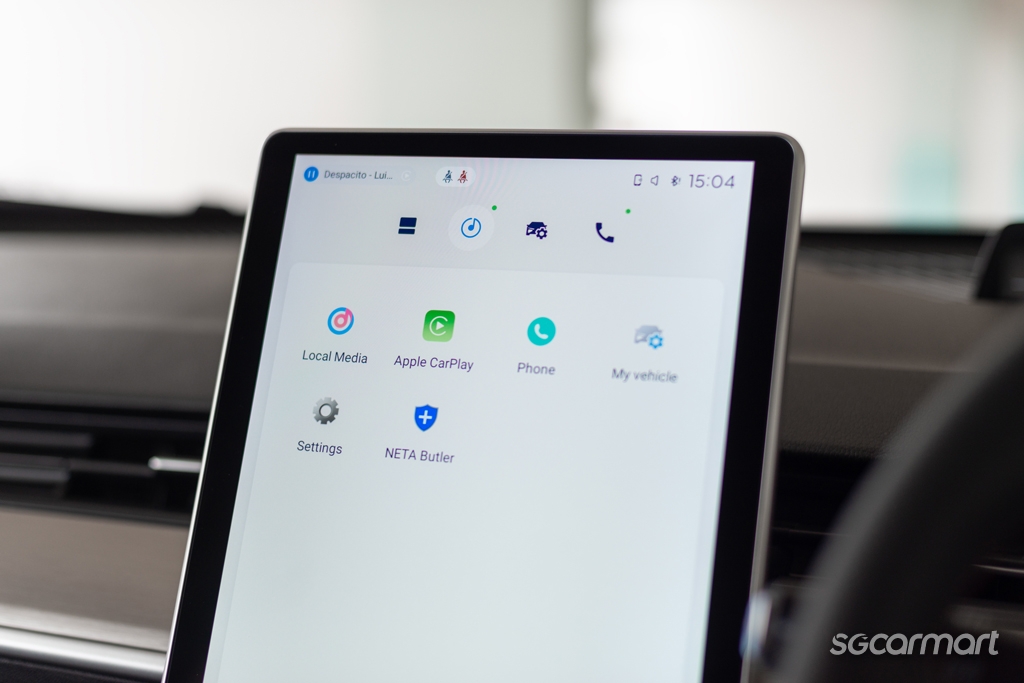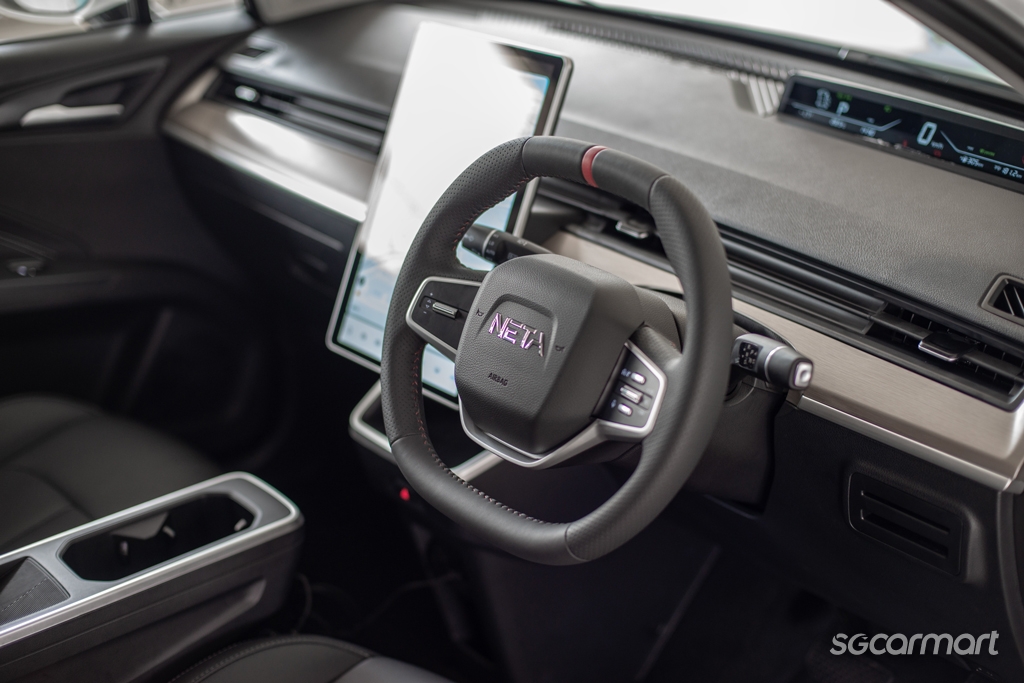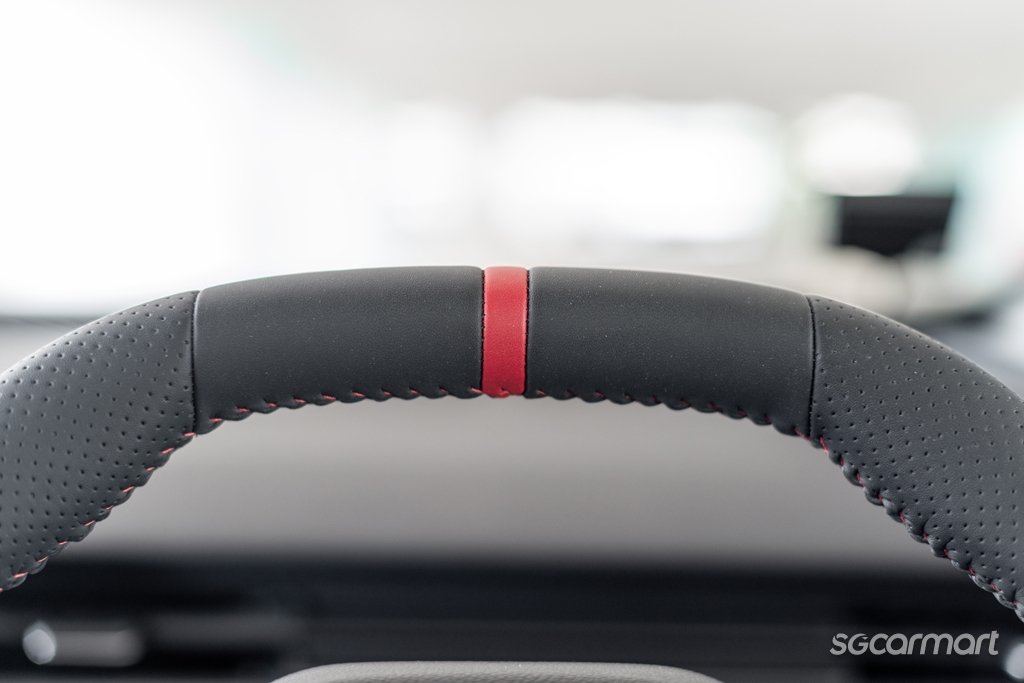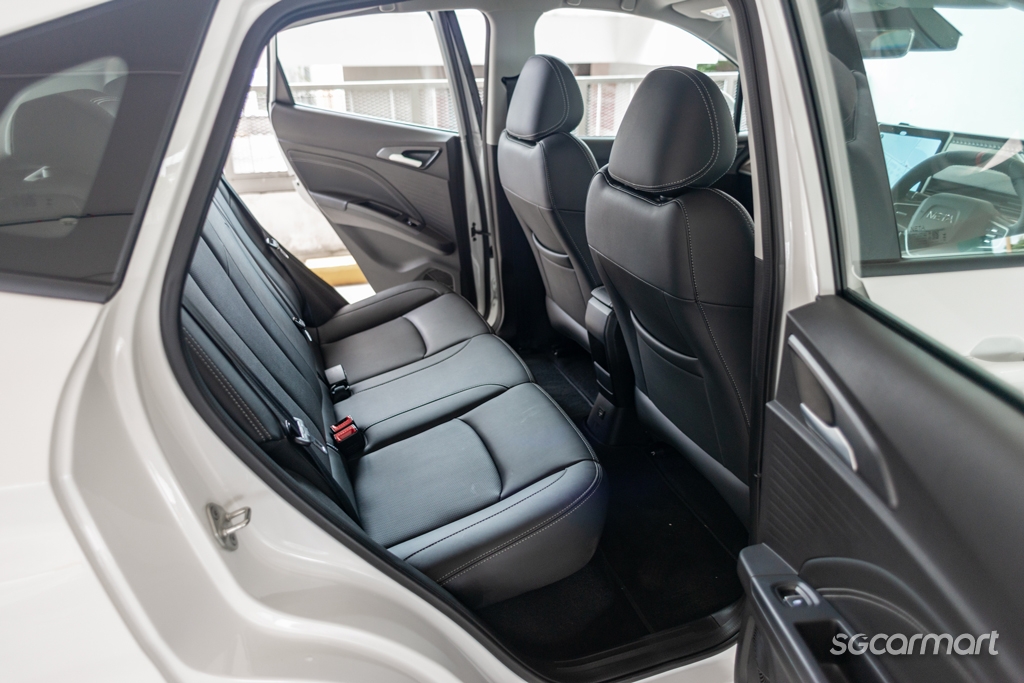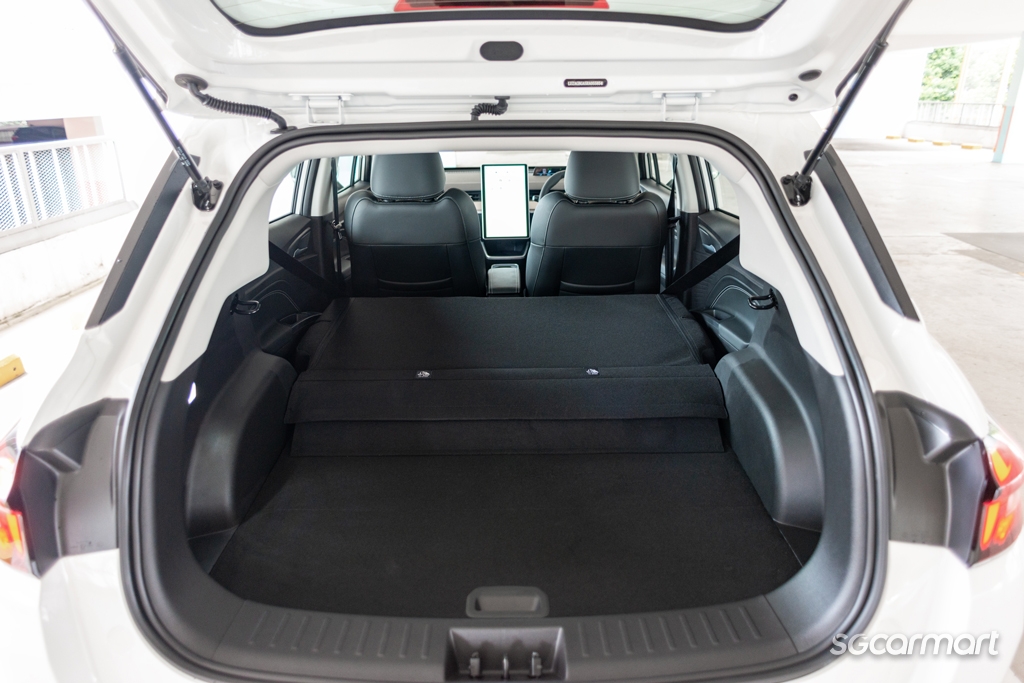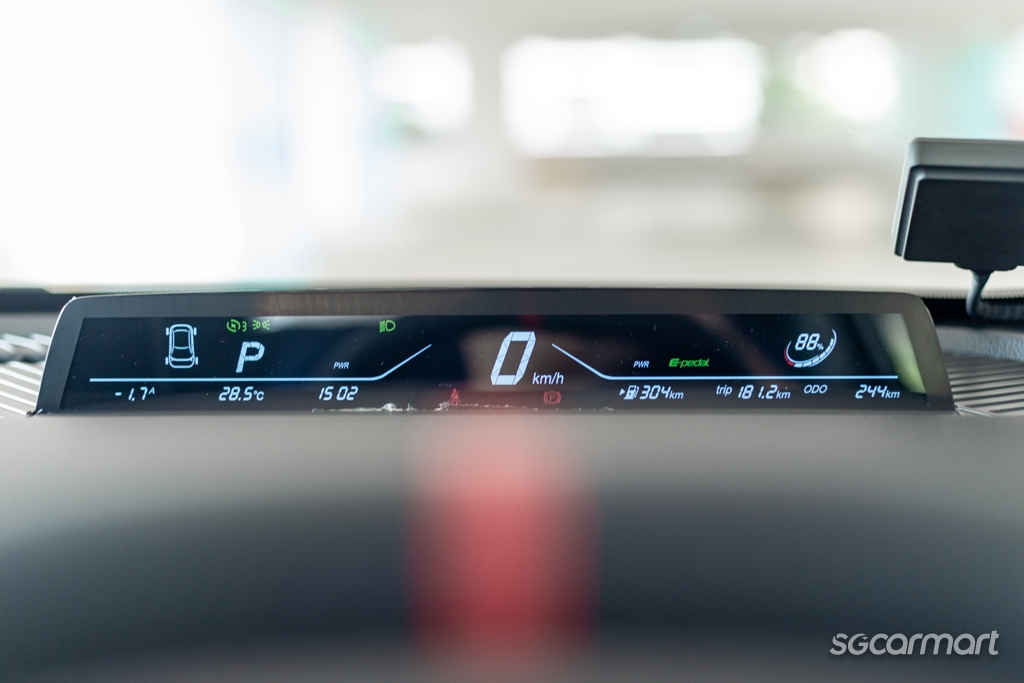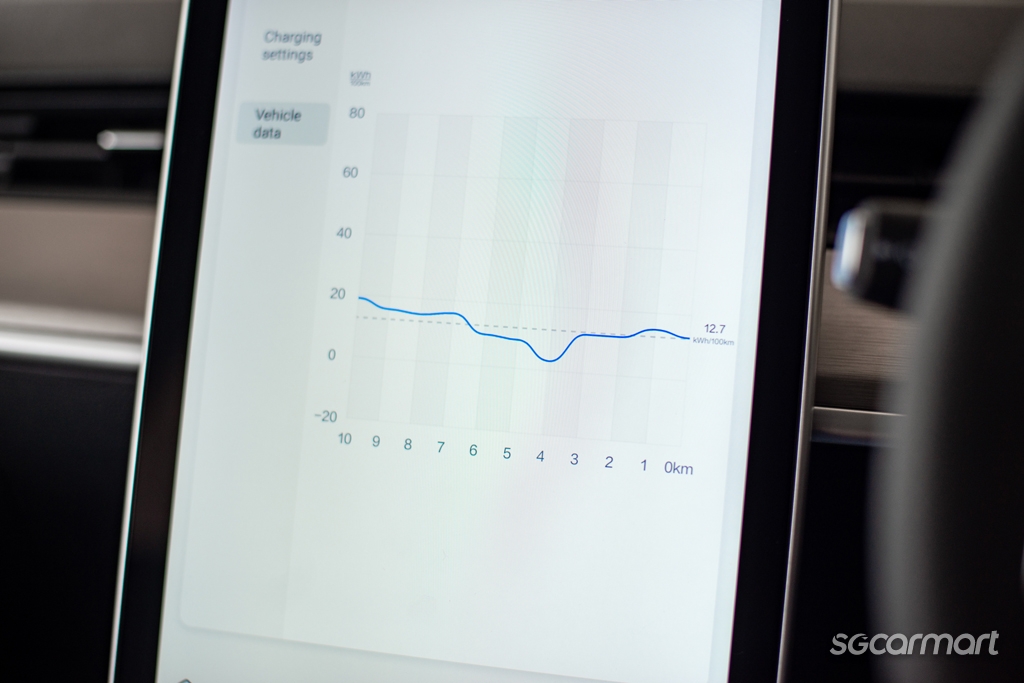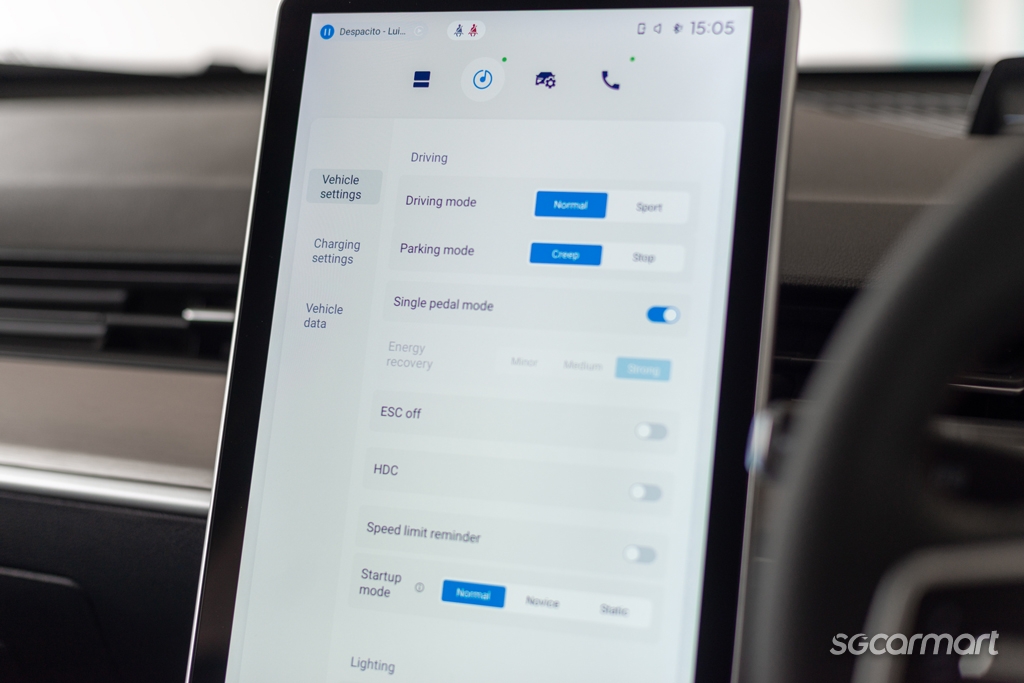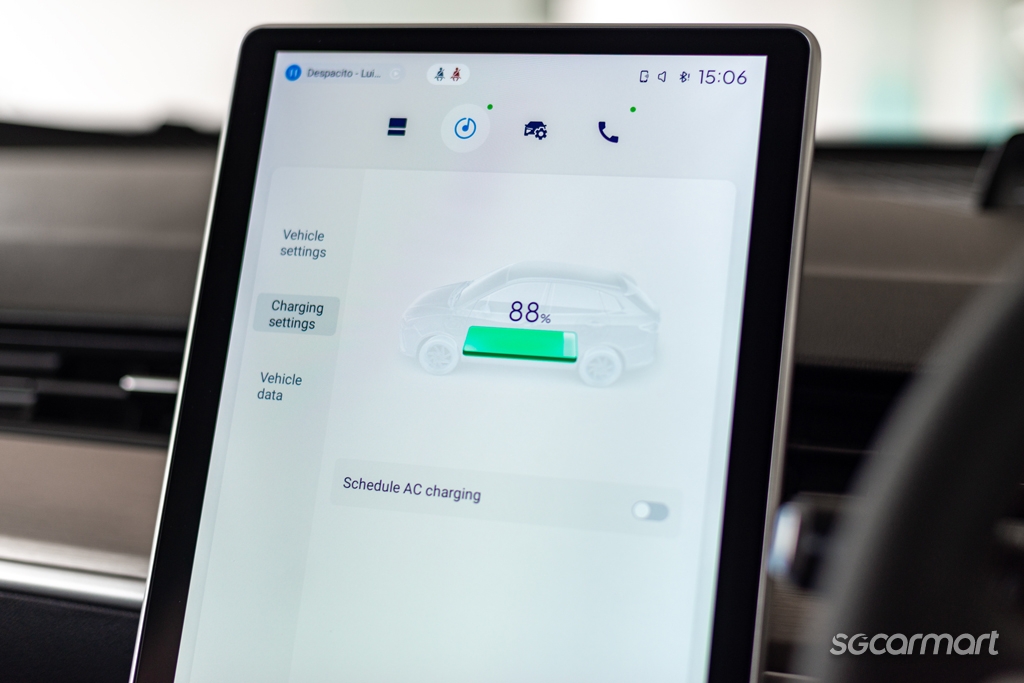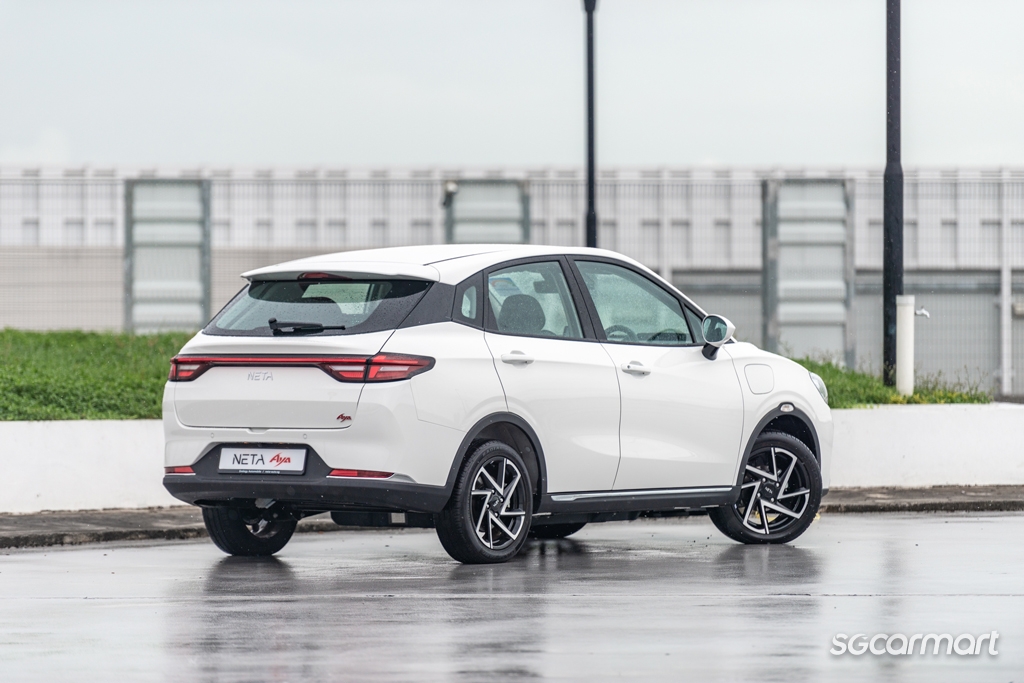Neta Aya 40.7kWh Review
27 Dec 2024|3,064 views
What We Like
Nimble handling
Sporty steering wheel
Large infotainment screen
More efficient than expected
Great for newbie drivers
What We Dislike
A lot costlier than rivals
Audio warning for pedestrians is too loud
No ADAS
It's not easy being a bread-and-butter car in Singapore these days. Our car prices, already the highest in the world, make budget-friendly runabouts impossible to attain. High-COE conditions favour luxury models with sky-high price tags, since the obstacle to ownership is comparatively lower.
For example, a BMW X3 costs $337,888 and the Cat B COE premium of $109,000 is 32% of that. A Toyota Corolla Altis, on the other hand, retails for $164,888. But Cat A COE currently stands at $96,000 or 58% of the car's price tag. In this light, the X3 is the 'better' buy since the tax component is lesser.
Hence, a dearth of once-accessible, bread-and-butter cars. Yet, that hasn't stopped newcomer Neta from introducing the Aya, a simple runabout meant for newbie drivers, but is more likely to find itself part of a leasing company's fleet.
An acronym
Aya supposedly stands for 'Amazing, Young, Active'. It's Neta's entry-level model that's targeted at budget-conscious drivers seeking an electric runabout.
Its design, however, does not seem to follow the brand's identity. The X crossover we previously reviewed has sleek lines and a cohesive design. The Aya is an unconventional hatchback with a fastback-style tailgate.
It has a mix of lines and curves, but fortunately, its rear looks resolved thanks to the full-width taillight and roof spoiler. It looks like nothing else on the roads today, which for a new player, can be a plus point.
Another positive here is the Aya's compact size. It's a little larger than a kei car, measuring 4,070mm long, 1,690mm wide and 1,540mm tall. The wheelbase is a useful 2,420mm long.
There's a big surprise when you open the door and get behind the wheel: The tablet-style, 14.6-inch infotainment display, which is so huge it seems out of place in such a compact vehicle. In fact, it seems to even dwarf the dashboard. Speaking of which, the dash in trimmed with what resembles brushed aluminium, which lifts the cabin's appearance.
The infotainment screen is angled towards the driver, and three-point turns are easier with the column-mounted gearshift lever
Practical considerations
The Aya's infotainment is probably one of the most user-friendly systems you will encounter today - Apple users can just plug in their phone and CarPlay instantly loads, giving you access to your music and navigation.
However, the system's ease of use is primarily down to the fact that the Aya has no Advanced Driver Assistance Systems (ADAS). Its safety equipment is basic, with two front airbags, ABS, traction control, and electronic stability control.
Interestingly, the car does have Hill Hold Control, Hill Descent Control and a Tyre Pressure Monitoring System, though.
Another notable feature is the small steering wheel shaped like a rounded square that's reminiscent of the one in the Peugeot 3008 and e-2008. The good news is that it doesn't block your view of the 12.0-inch digital instrument panel, but the bad news is that it is non-adjustable.
The lack of helm adjustment means you can only hope that after adjusting your seat, the steering wheel will neither be too near nor too far from your reach. Maybe this saves costs and maybe it prevents the instrument panel from being blocked. Either way, it is an inconvenience.
The Aya's 2,420mm wheelbase is about right for a vehicle in this segment, and backseat occupants have a flat rear floor that helps improve accommodations. Anyone over 1.75m tall may feel claustrophobic, and three adults here will probably be rubbing arms and shoulders.
In terms of boot capacity, the Aya offers 335 litres with the rear seatbacks up. There are no split-folding seats, but folding the backseat increases the volume to 588 litres. Though the Aya probably won't be used for load-hauling, it'll still be useful if say, you had to pick up a friend from the airport.
Backseat space is decent and all occupants get a three-point seatbelt, and although the seats don't fold flat, the intrusion by the wheel arches is minimal
Strength through efficiency
As a regular electric runabout, the Aya is equipped with a 40.7kWh lithium-iron phosphate (LFP) battery that Neta says can deliver a WLTP range of 338km. Average energy consumption is rated at 7.2km/kWh.
Impressively, the Aya delivered 9km/kWh when I included more expressway drives. With more stop-start urban traffic, the figure dropped to 8.5km/kWh. But even at this level, the hatchback should cover over 300km before needing a recharge.
The instrument panel isn't the fanciest, but its layout is simple and it remains legible even in harsh light
That said, the Aya's efficiency is also due to its gentle performance, with the permanent magnet synchronous motor providing 70kW (94bhp) and 150Nm of torque. Zero to 100km/h takes 12 seconds, while the top speed is approximately 110km/h.
The figures are modest, but if you've never driven an EV before, one advantage they have over a comparable internal combustion engine or ICE vehicle is that they won't sound like they're struggling. Sure, it takes a while to pile on the speed, but at least there's no workmanlike soundtrack. The torque is immediate, too.
Newbie drivers will like the Aya's approachability. It won't scare you with its acceleration, while its compact size makes it a total breeze to parallel park. Manoeuvring around tight multi-storey carparks is also less daunting. You might even be tempted to chuck the car around.
The ride quality is fair considering the hatchback's size and wheelbase, though it must be said that wind noise is obvious even at 70km/h. Still, when you consider that the Aya is a bread-and-butter runabout, it's easy to forgive.
Show me the money
What buyers will find hard to look past, though, is the Aya's price tag, which starts from $144,888 with COE. At this point, the Aya faces tough competition. Its direct rival, the Dongfeng Box, is better equipped, has a longer wheelbase and more interior space.
One could also consider the contenders from Aion. The ES, which costs $5,900 less, is a 'basic' sedan, but it's bigger and has a larger battery. Or, for $1,900 less, there's the even larger Y Plus crossover.
That makes the Aya comparatively expensive. So, unless the car's price can be reduced to around $115,000 (considering the level of equipment) it is likely that the hatchback's customers will be fleet operators instead of private buyers.
These articles might also interest you
The all-new, fourth-generation Suzuki Swift is a charming compact hatchback that reminds us that we do not need a high-powered car to have a good time
Feline puns aside, ORA's Good Cat is nippy, user-friendly, has a snazzy design and is relatively affordable, which could attract first-time EV buyers
Distinct styling aside, the pint-sized Dolphin's outsized equipment list and superb practicality make it a valuable addition to the BYD electric family
What We Like
Nimble handling
Sporty steering wheel
Large infotainment screen
More efficient than expected
Great for newbie drivers
What We Dislike
A lot costlier than rivals
Audio warning for pedestrians is too loud
No ADAS
It's not easy being a bread-and-butter car in Singapore these days. Our car prices, already the highest in the world, make budget-friendly runabouts impossible to attain. High-COE conditions favour luxury models with sky-high price tags, since the obstacle to ownership is comparatively lower.
For example, a BMW X3 costs $337,888 and the Cat B COE premium of $109,000 is 32% of that. A Toyota Corolla Altis, on the other hand, retails for $164,888. But Cat A COE currently stands at $96,000 or 58% of the car's price tag. In this light, the X3 is the 'better' buy since the tax component is lesser.
Hence, a dearth of once-accessible, bread-and-butter cars. Yet, that hasn't stopped newcomer Neta from introducing the Aya, a simple runabout meant for newbie drivers, but is more likely to find itself part of a leasing company's fleet.
An acronym
Aya supposedly stands for 'Amazing, Young, Active'. It's Neta's entry-level model that's targeted at budget-conscious drivers seeking an electric runabout.
Its design, however, does not seem to follow the brand's identity. The X crossover we previously reviewed has sleek lines and a cohesive design. The Aya is an unconventional hatchback with a fastback-style tailgate.
It has a mix of lines and curves, but fortunately, its rear looks resolved thanks to the full-width taillight and roof spoiler. It looks like nothing else on the roads today, which for a new player, can be a plus point.
Another positive here is the Aya's compact size. It's a little larger than a kei car, measuring 4,070mm long, 1,690mm wide and 1,540mm tall. The wheelbase is a useful 2,420mm long.
There's a big surprise when you open the door and get behind the wheel: The tablet-style, 14.6-inch infotainment display, which is so huge it seems out of place in such a compact vehicle. In fact, it seems to even dwarf the dashboard. Speaking of which, the dash in trimmed with what resembles brushed aluminium, which lifts the cabin's appearance.
The infotainment screen is angled towards the driver, and three-point turns are easier with the column-mounted gearshift lever
Practical considerations
The Aya's infotainment is probably one of the most user-friendly systems you will encounter today - Apple users can just plug in their phone and CarPlay instantly loads, giving you access to your music and navigation.
However, the system's ease of use is primarily down to the fact that the Aya has no Advanced Driver Assistance Systems (ADAS). Its safety equipment is basic, with two front airbags, ABS, traction control, and electronic stability control.
Interestingly, the car does have Hill Hold Control, Hill Descent Control and a Tyre Pressure Monitoring System, though.
Another notable feature is the small steering wheel shaped like a rounded square that's reminiscent of the one in the Peugeot 3008 and e-2008. The good news is that it doesn't block your view of the 12.0-inch digital instrument panel, but the bad news is that it is non-adjustable.
The lack of helm adjustment means you can only hope that after adjusting your seat, the steering wheel will neither be too near nor too far from your reach. Maybe this saves costs and maybe it prevents the instrument panel from being blocked. Either way, it is an inconvenience.
The Aya's 2,420mm wheelbase is about right for a vehicle in this segment, and backseat occupants have a flat rear floor that helps improve accommodations. Anyone over 1.75m tall may feel claustrophobic, and three adults here will probably be rubbing arms and shoulders.
In terms of boot capacity, the Aya offers 335 litres with the rear seatbacks up. There are no split-folding seats, but folding the backseat increases the volume to 588 litres. Though the Aya probably won't be used for load-hauling, it'll still be useful if say, you had to pick up a friend from the airport.
Backseat space is decent and all occupants get a three-point seatbelt, and although the seats don't fold flat, the intrusion by the wheel arches is minimal
Strength through efficiency
As a regular electric runabout, the Aya is equipped with a 40.7kWh lithium-iron phosphate (LFP) battery that Neta says can deliver a WLTP range of 338km. Average energy consumption is rated at 7.2km/kWh.
Impressively, the Aya delivered 9km/kWh when I included more expressway drives. With more stop-start urban traffic, the figure dropped to 8.5km/kWh. But even at this level, the hatchback should cover over 300km before needing a recharge.
The instrument panel isn't the fanciest, but its layout is simple and it remains legible even in harsh light
That said, the Aya's efficiency is also due to its gentle performance, with the permanent magnet synchronous motor providing 70kW (94bhp) and 150Nm of torque. Zero to 100km/h takes 12 seconds, while the top speed is approximately 110km/h.
The figures are modest, but if you've never driven an EV before, one advantage they have over a comparable internal combustion engine or ICE vehicle is that they won't sound like they're struggling. Sure, it takes a while to pile on the speed, but at least there's no workmanlike soundtrack. The torque is immediate, too.
Newbie drivers will like the Aya's approachability. It won't scare you with its acceleration, while its compact size makes it a total breeze to parallel park. Manoeuvring around tight multi-storey carparks is also less daunting. You might even be tempted to chuck the car around.
The ride quality is fair considering the hatchback's size and wheelbase, though it must be said that wind noise is obvious even at 70km/h. Still, when you consider that the Aya is a bread-and-butter runabout, it's easy to forgive.
Show me the money
What buyers will find hard to look past, though, is the Aya's price tag, which starts from $144,888 with COE. At this point, the Aya faces tough competition. Its direct rival, the Dongfeng Box, is better equipped, has a longer wheelbase and more interior space.
One could also consider the contenders from Aion. The ES, which costs $5,900 less, is a 'basic' sedan, but it's bigger and has a larger battery. Or, for $1,900 less, there's the even larger Y Plus crossover.
That makes the Aya comparatively expensive. So, unless the car's price can be reduced to around $115,000 (considering the level of equipment) it is likely that the hatchback's customers will be fleet operators instead of private buyers.
These articles might also interest you
The all-new, fourth-generation Suzuki Swift is a charming compact hatchback that reminds us that we do not need a high-powered car to have a good time
Feline puns aside, ORA's Good Cat is nippy, user-friendly, has a snazzy design and is relatively affordable, which could attract first-time EV buyers
Distinct styling aside, the pint-sized Dolphin's outsized equipment list and superb practicality make it a valuable addition to the BYD electric family
Thank You For Your Subscription.
- An Acronym
- Practical Considerations
- Strength Through Efficiency
- Show Me The Money










































